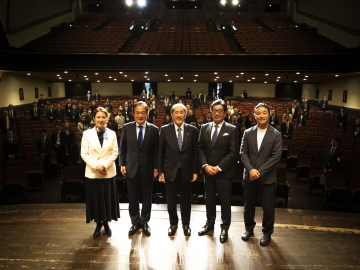Research on fluid-structure interactions in applied mechanics
Associate Professor Kenji Takizawa of the Department of Modern Mechanical Engineering, School of Creative Science and Engineering, Faculty of Science and Engineering
Overcoming topology change in cardiovascular analysis
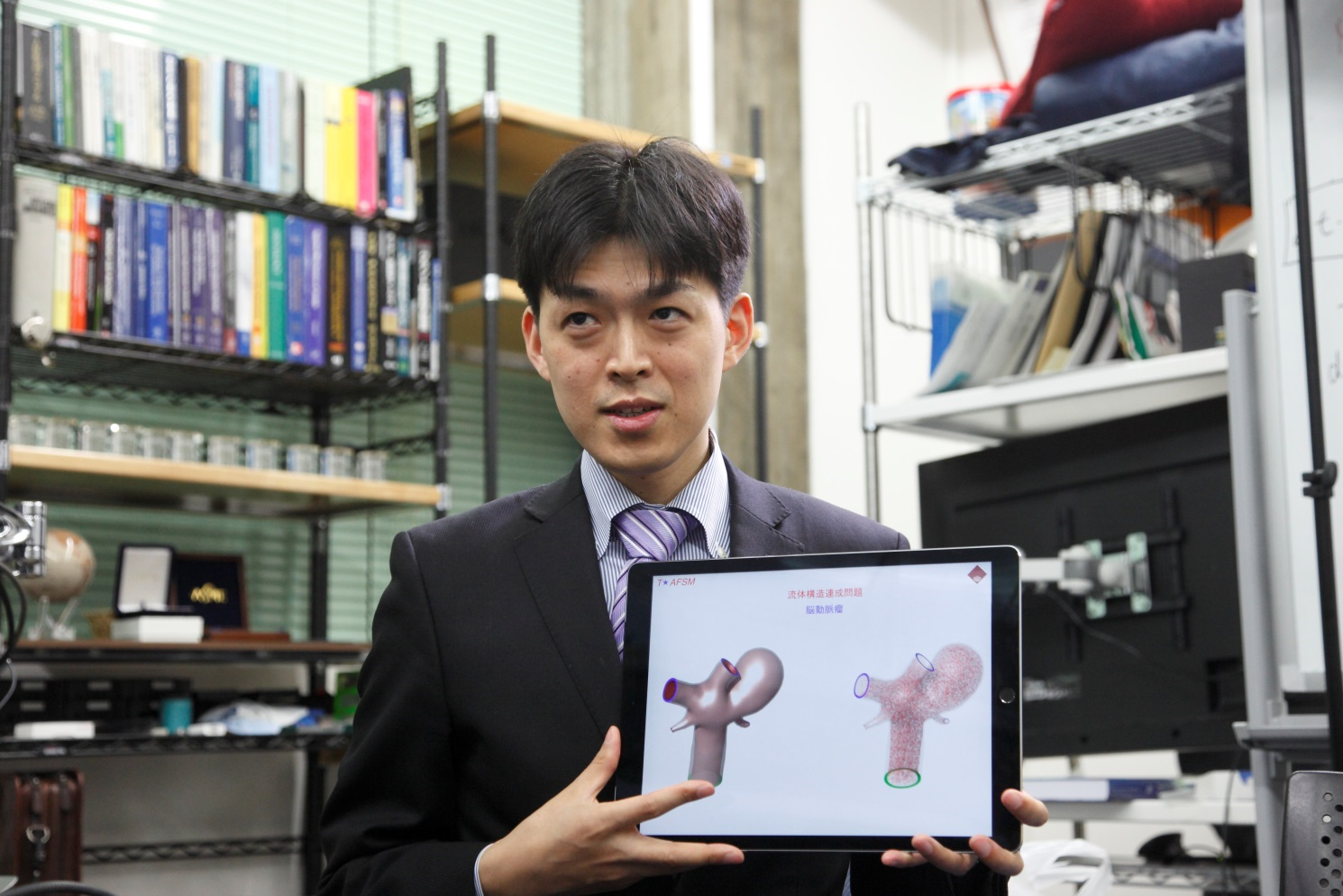 A large number of papers have cited Professor Takizawa’s research. His research has been making a major impact. This time, the Center for Research Strategy hears from the Professor about his particularly strong interest in in-vivo blood flow analysis. (Interview date: December 14, 2016)
A large number of papers have cited Professor Takizawa’s research. His research has been making a major impact. This time, the Center for Research Strategy hears from the Professor about his particularly strong interest in in-vivo blood flow analysis. (Interview date: December 14, 2016)
The challenge of fluid-structure interaction in vivo
One of the research topics that I am especially focused on at the moment is in-vivo blood flow analysis. Heart and blood vessels, which pump and carry blood throughout the body, are relatively soft structures. Analysis of how these soft structures interact with the blood flow is an FSI analysis.
This is another topic I began working on while at Rice University. Houston, Texas, where Rice University is, has one of the top three world’s largest medical centers, where medical research institutes and hospitals huddle together, and I started this joint research with the doctors there.
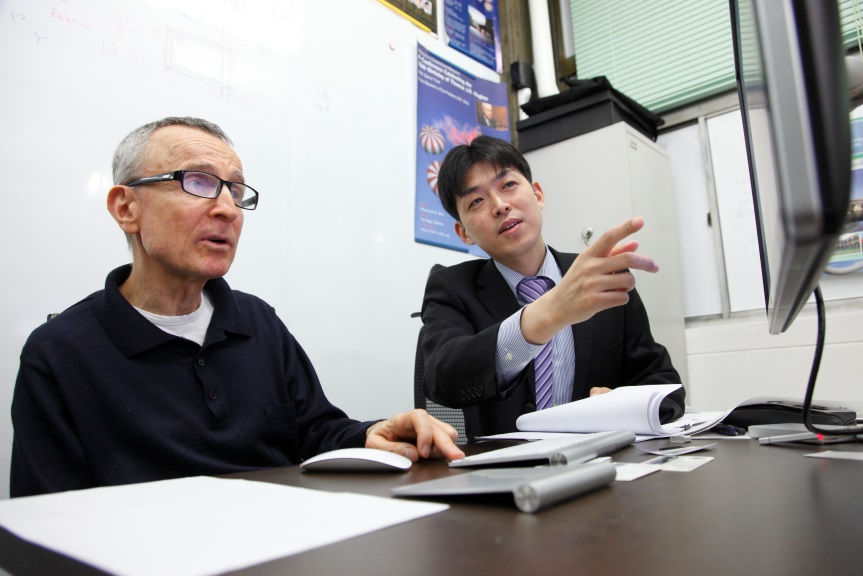
Photo: In the Takizawa Laboratory. Discussing computational-analysis data with Professor Tayfun Tezduyar from Rice University
Even after starting faculty position at Waseda, I continued to work on the same theme under the Japan Science and Technology Agency’s (JST) Core Research for Evolutional Science and Technology (CREST) Program. The collaborative JST CREST research project, titled “New developments of mathematical modeling in clinical medicine,” is led by Dr. Hiroshi Suito of Okayama University and includes Dr. Takuya Ueda of the Chiba Medical Center, Dr. Norikazu Saito of the University of Tokyo and Dr. Yoshitaka Masutani of Hiroshima City University. Since the project’s initiation in 2011, papers summarizing the results have gained significant recognition, and the second phase of the project has been in progress since 2015.
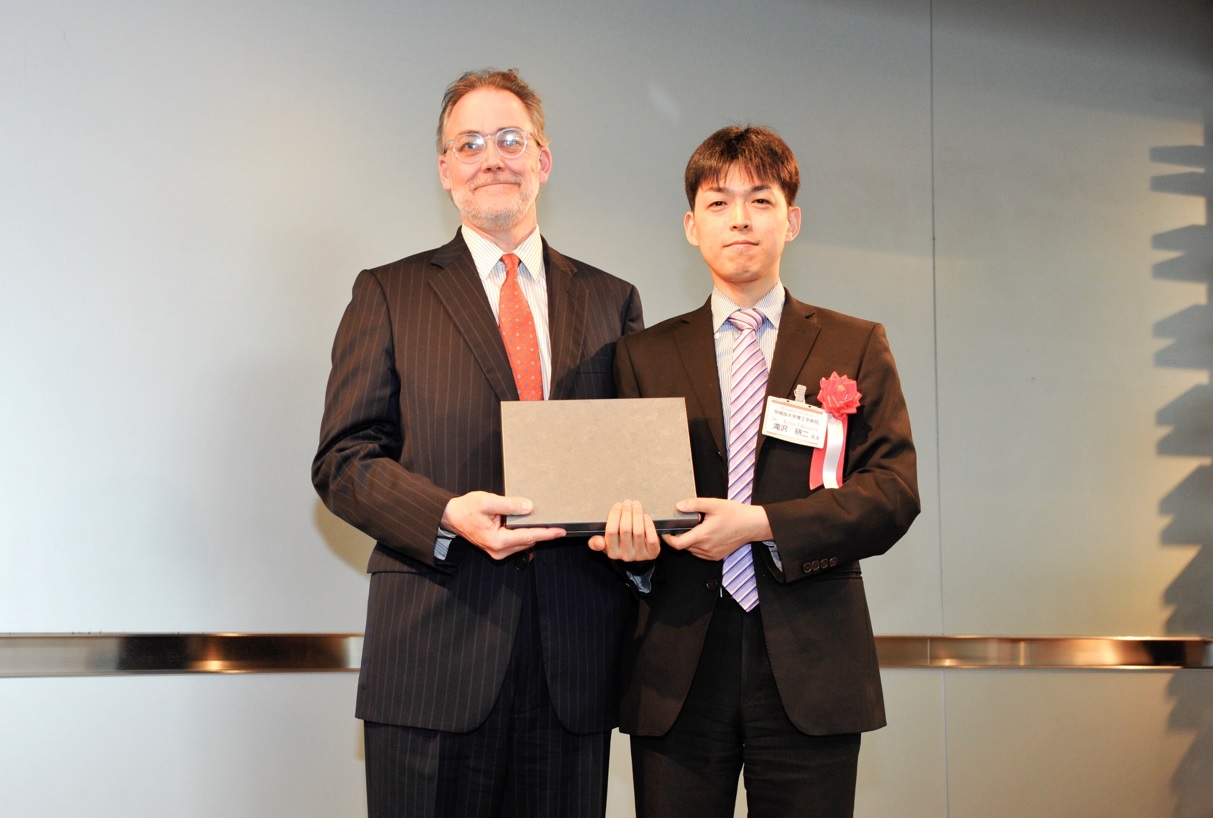
Photo: Takizawa is among the twelve Japanese scientists recognized by Thomson Reuters with the Japan Research Front Awards 2016.
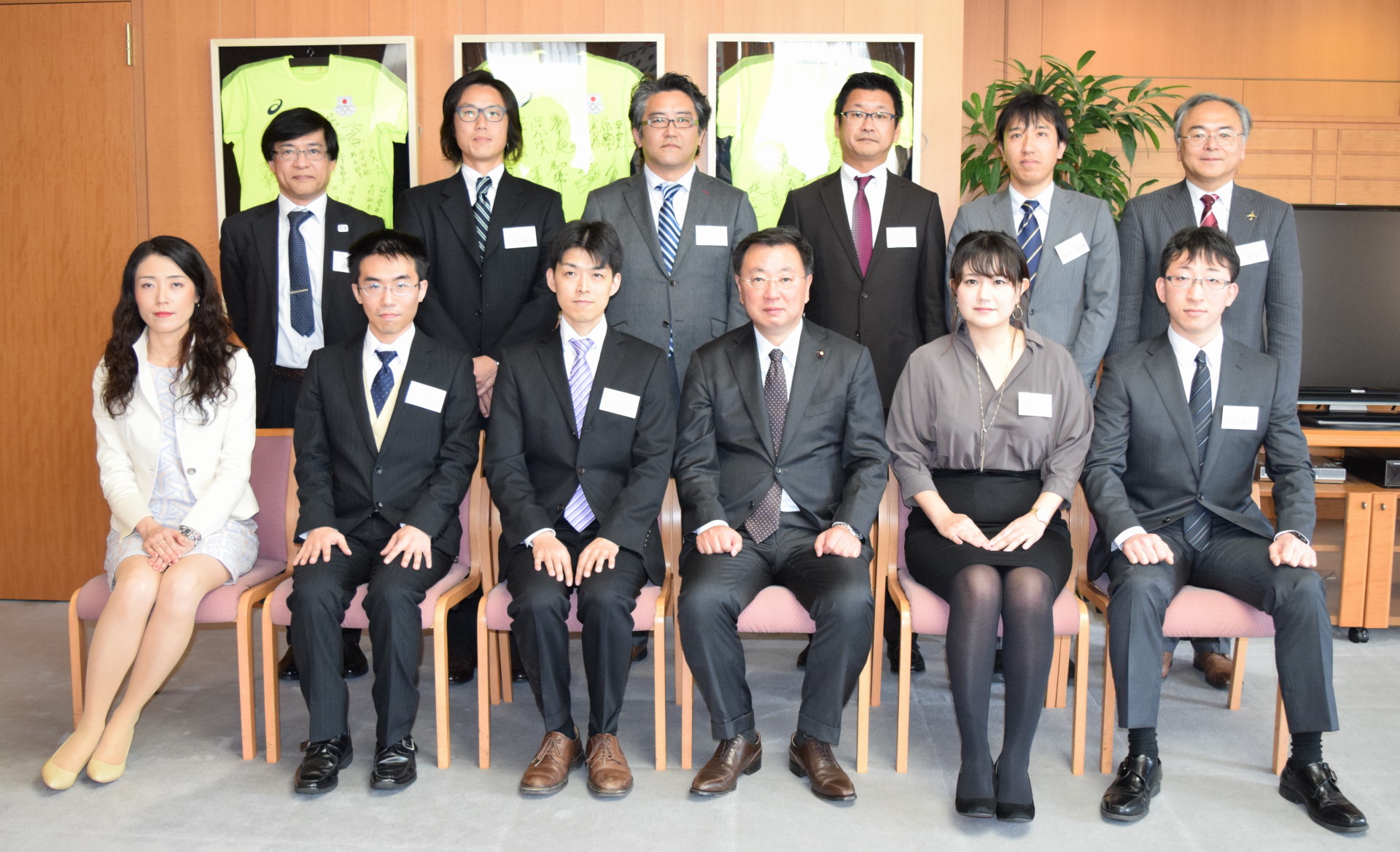
Photo: Takizawa has been selected as one of the 2016 NISTEP Award winners by Japan National Institute of Science and Technology Policy (NISTEP).
The blood flow analysis research I conducted in Houston is an easy-to-understand example of how such analysis can help doctors make better decisions. That research was about blood flow in cerebral arteries with aneurysm. An aneurysm is a part of a blood vessel that bulges and forms a bump. One way of treating this medical condition is based on reducing the blood circulation in the aneurysm, and thus letting the aneurysm become inactive by thrombosis. How to do that of course very much depends on the individual blood flow conditions for each patient, and the computational analysis can provide that information to the doctor.
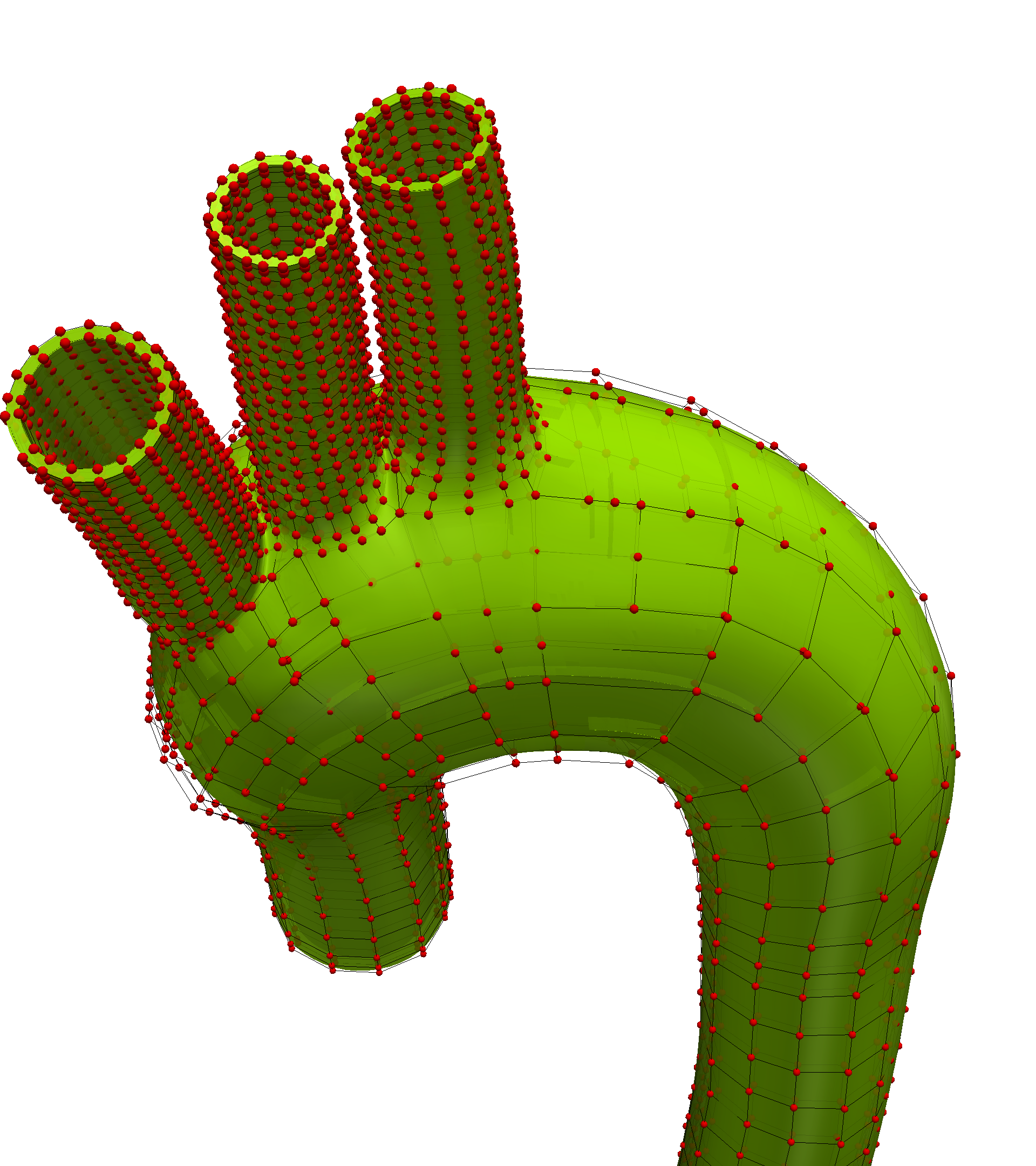
Figure: Structural analysis of the aorta (Source: Takizawa Laboratory)
The unique computational-analysis challenges posed by the human body
The main problem in blood flow analysis is that determining the blood vessel shape is not easy. The blood vessel shape in a living body is always affected by the blood pressure. To compute that shape accurately during the FSI, we first need to determine the shape when there is no blood pressure and no stresses in the arterial wall. Yet, the medical images we are given to use in the computational analysis do not correspond to such conditions. Determining the arterial shape under the zero-stress conditions is another challenge that we are addressing. Furthermore, the computational analysis has to be patient-specific, because it is natural that the arterial shape and blood flow will vary significantly between different patients. The doctor simply cannot use the computational analysis conducted for one patient to make decisions about another patient.
For accurate aorta-flow analysis, we need to take into account the influence of the heart valve, which regulates the blood flow. This is one of the key topics of CREST’s second-phase project.
Heart valve flow is also one of the major challenges in computational analysis. When a valve closes, solid surfaces (leaflets) with fluid in between come into contact, and the space occupied by the fluid is divided in two or more pieces. The reverse happens when the valve opens. The “topology” of a space tells us if the space is made of one piece or multiple pieces. As the valve opens and closes, the topology of the fluid mechanics space changes. With standard computational methods, accurate analysis when there is topology change (TC) is difficult.
Hence, in enhancing the ST method, we have developed two new methods, and also integrated them to work together. One of the methods, called the ST-TC (Space-Time Topology Change), can accurately handle flow problems with TC. The other method, the ST-SI (Space-Time Slip Interface), enables accurate computational analysis by i) decreasing the mesh moving complexity associated with the motion of valve leaflets and ii) making it possible for the leaflets to come into contact and slide over each other. The integration of the two methods, called the ST-SI-TC, further increases the scope and accuracy of blood flow analysis. We expect that in the future this will help clinical studies.
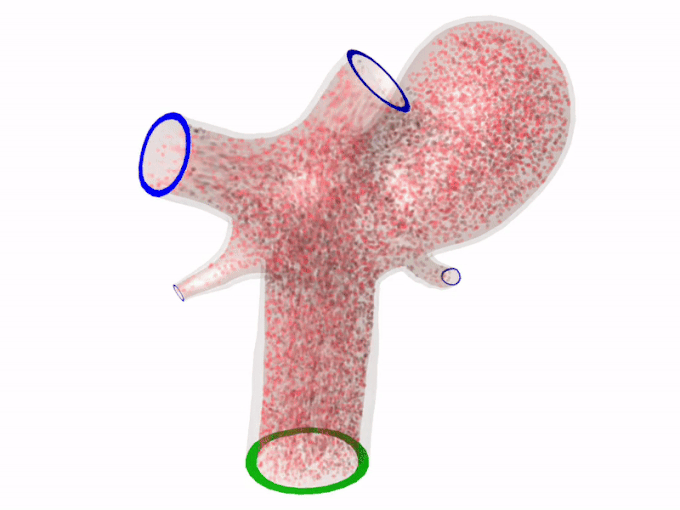
Figure: Computational analysis of a cerebral aneurysm (Source: Takizawa Laboratory)
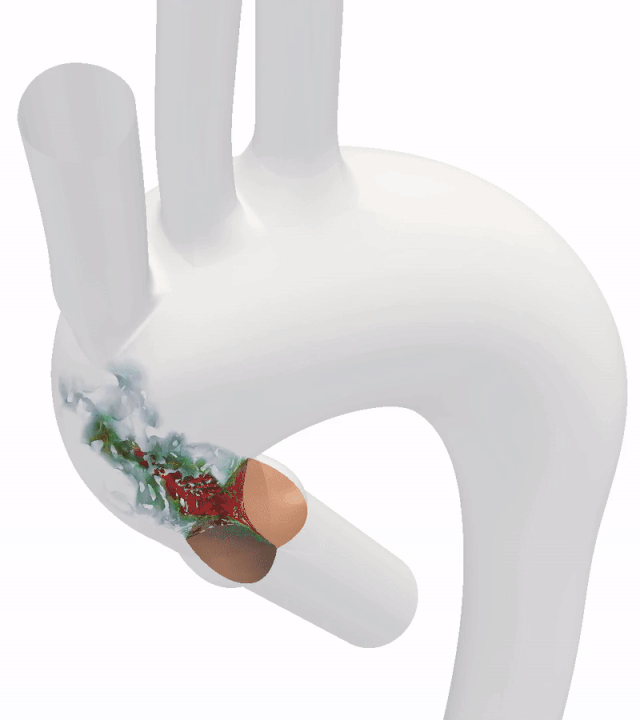
Figure: Computational analysis of blood flow in the aorta, including the heart valve (Source: Takizawa Laboratory)
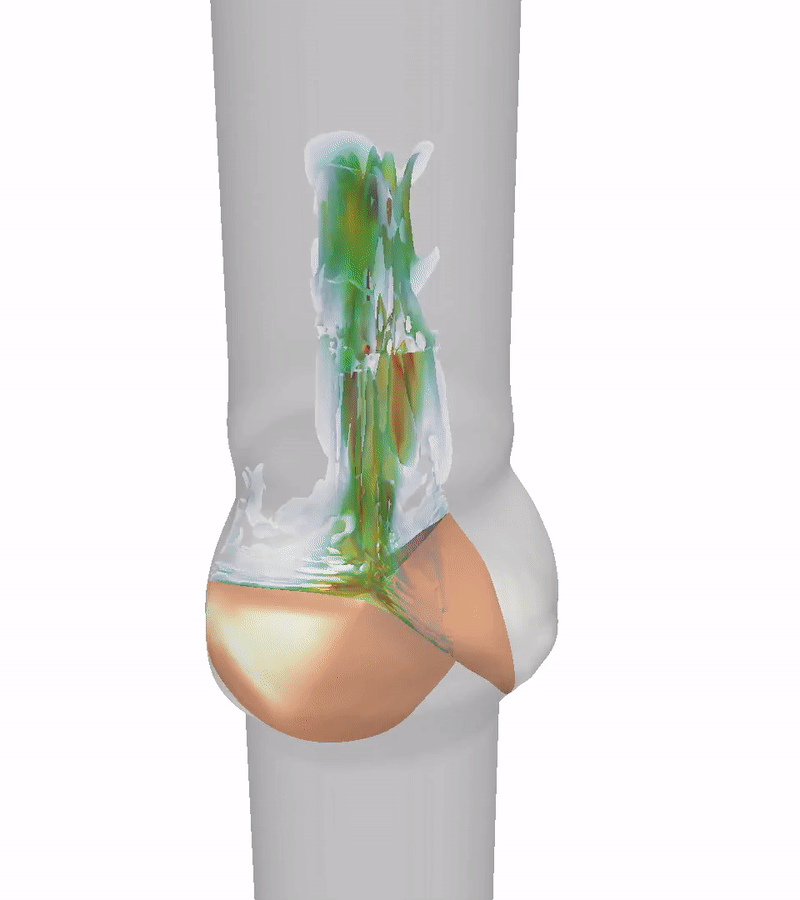
Figure: Fluid mechanics analysis of the aortic valve model (Source: Takizawa Laboratory)
In Part 3, we will hear about the computational analysis of airflow around tires, another study that Professor Takizawa has been focusing on recently.
☞Click here for Part 1
☞Click here for Part 3
Profile
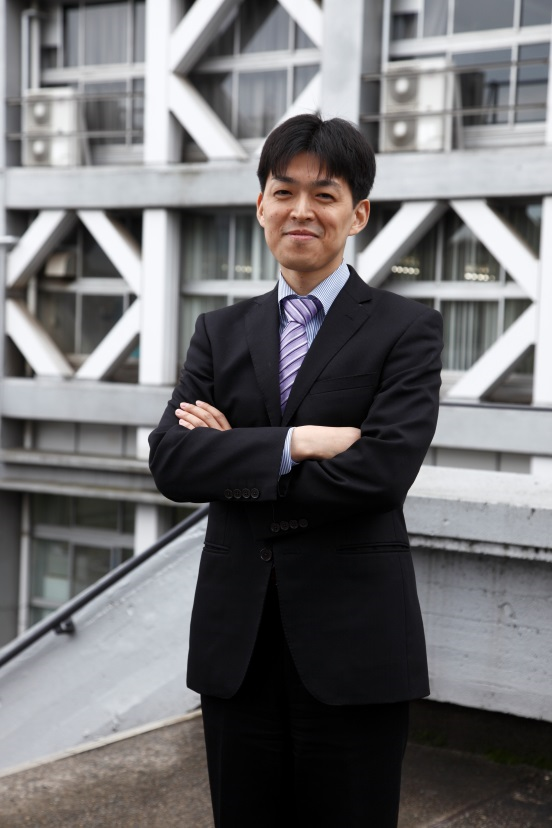 Kenji Takizawa
Kenji Takizawa
Professor Takizawa graduated from Tokyo Institute of Technology’s Department of Mechano-Aerospace Engineering in 2001 and earned his doctoral degree in science from the Department of Energy Science at Tokyo Tech in 2005. He became a research staff member at the National Maritime Research Institute in 2005 and held the positions of research associate and research scientist at Rice University starting in 2007. Professor Takizawa has been an associate professor at Waseda University’s Faculty of Science and Engineering since 2011. Specializing in computational mechanics, he studies a wide range of fields including fluid dynamics, structural mechanics and biomechanics. In recent years, he has gained global recognition and won numerous awards.
Major achievements
Journal articles
- K. Takizawa, T.E. Tezduyar, T. Terahara, and T. Sasaki, “Heart Valve Flow Computation with the Integrated Space–Time VMS, Slip Interface, Topology Change and Isogeometric Discretization Methods,” Computers & Fluids, published online, DOI: 10.1016/j.compfluid.2016.11.012 (2016)
- K. Takizawa, “Computational Engineering Analysis with the New-Generation Space–Time Methods,” Computational Mechanics, 54(2014) 193–211, DOI: 10.1007/s00466-014-0999-z
- K. Takizawa, Y. Bazilevs, and T.E. Tezduyar, “Space–Time and ALE-VMS Techniques for Patient-Specific Cardiovascular Fluid–Structure Interaction Modeling,” Archives of Computational Methods in Engineering, 19 (2012) 171–225, DOI: 10.1007/s11831-012-9071-3
- K. Takizawa, and T.E. Tezduyar, “Computational Methods for Parachute Fluid–Structure Interactions,” Archives of Computational Methods in Engineering, 19(2012) 125–169, DOI: 10.1007/s11831-012-9070-4
- K. Takizawa, and T.E. Tezduyar, “Multiscale Space–Time Fluid–Structure Interaction Techniques,” Computational Mechanics, 48 (2011) 247–267, DOI: 10.1007/s00466-011-0571-z
For other publications see here
Books
- Y. Bazilevs, K. Takizawa, and T.E. Tezduyar, “Computational Fluid–Structure Interaction: Methods and Applications,” Wiley, ISBN 978-0470978771, doi: 10.1002/9781118483565 (2013)
- Y. Bazilevs, K. Takizawa, and T.E. Tezduyar, “Computational Fluid–Structure Interaction: Methods and Applications,” Morikita, ISBN 978-4-627-67481-3, Translation from English: Y. Tsugawa and K. Takizawa. (2015)
Honors and awards
- Young Investigator Award, Japan Association for Computational Mechanics (2007)
- Fellow Award, Japan Association for Computational Mechanics (2012)
- Young Investigator Award, International Association for Computational Mechanics (2012)
- Thomas J.R. Hughes Young Investigator Award, ASME Applied Mechanics Division (2012)
- Young Investigator Award, Asian Pacific Association for Computational Mechanics (2013)
- Computational Mechanics Achievement Award, Japan Society of Mechanical Engineers (2014)
- Waseda Research Award (High-Impact Publication), Waseda University (2014)
- Young Scientists’ Prize, Commendation for Science and Technology by Japan Minister of Education, Culture, Sports, Science and Technology (2015)
- Web of Science Highly Cited Researcher (Engineering), Thomson Reuters (2015)
- Japan Research Front Awards 2016, Thomson Reuters (2016)
- Web of Science Highly Cited Researcher (Engineering), Thomson Reuters (2016)
- NISTEP Award, National Institute of Science and Technology Policy (2016)


